Minds On
Sports safety
Explore this video from All Round Champion entitled “Snowboarding” to learn more about the sport.
Brainstorm
What do you think?
What are some concerns about a person’s safety when snowboarding?
Brainstorm situations that could lead to serious injury during snowboarding and other sports and physical activities.
Press ‘Hint’ to access examples.
For example, while skiing, someone can fall and fracture their wrist.
Injury
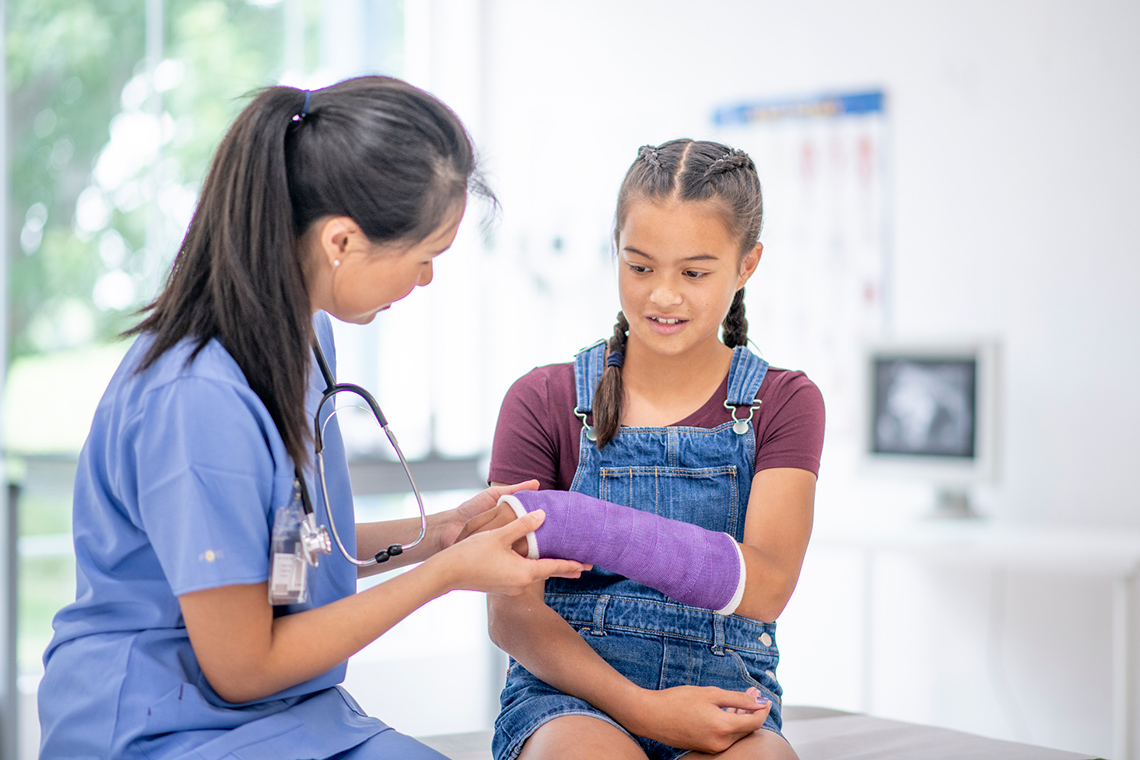
Knee sprains, fractured wrists, broken legs, dislocated shoulders, sprained ankles, are a few possible injuries that can happen during sports and physical activity.
Another injury that may occur is a concussion.
In the following mind map, record what you currently know about a concussion.
Complete the Concussion Mind Map Activity in your notebook or using the following fillable and printable document. If you would like, you can use speech-to-text or audio recording tools to record your thoughts.
Press the ‘Activity’ button to access the Concussion Mind Map Activity.
Action
Concussion
What is a concussion?
A concussion is a head and brain injury that is caused by a force to the head, or a sudden action that moves the head from one side to another, like a whip of the neck. A concussion interferes with the normal function of the brain.
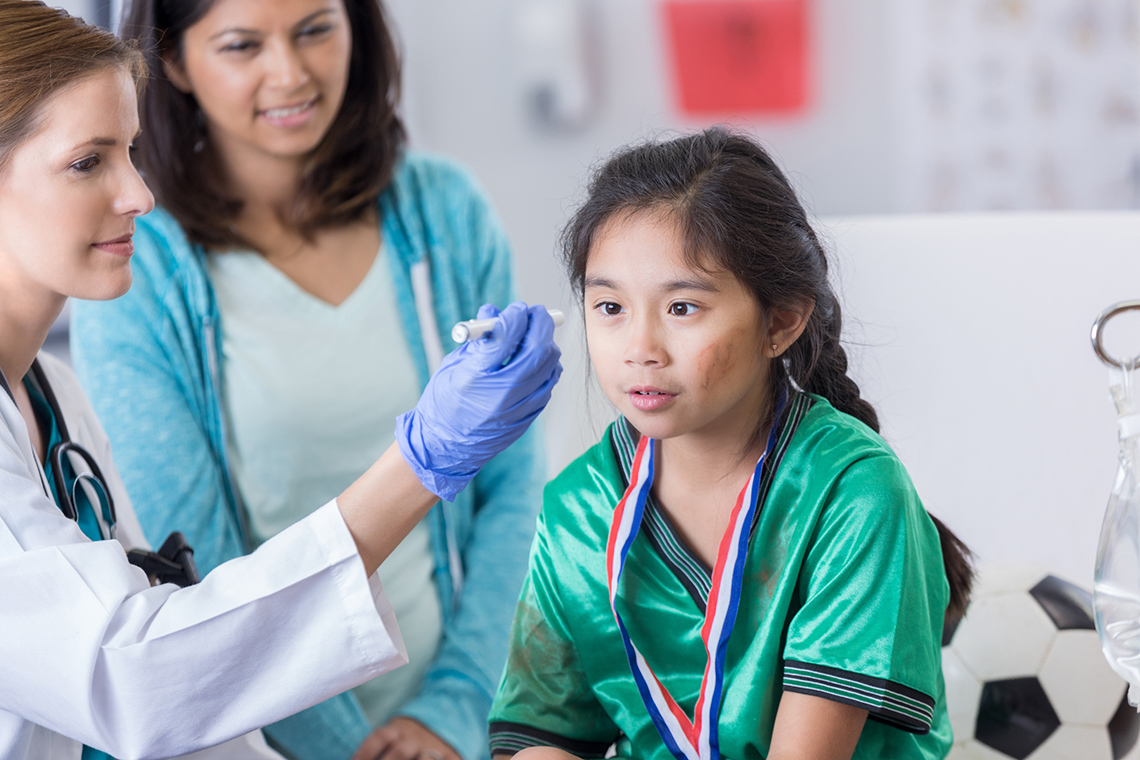
How does a concussion affect the brain?
The skull protects the brain from any injury. A head injury can hurt the brain directly or make the brain move against the hard bone of the skull. This can then change the signals between the body’s nerves, resulting in concussion symptoms.
Symptoms

Headache
There are many signs and symptoms of a concussion.
Some include:
- a headache
- balance problems
- dizziness
- nausea
- feeling “foggy”
- visual problems
- hearing problems
- irritability and/or emotional changes
Concussions also have physical signs and symptoms which include:
- loss of and/or impaired consciousness
- poor conduction or balance
- convulsions
- gait unsteadiness
- slow to answer questions, follow directions
- easily distracted
- emotional disturbance
- slurred speech
- vomiting
- vacant stare
If someone has had a fall and is experiencing any of the above signs or symptoms, they must speak to a trusted adult, and seek help from a health care professional right away.
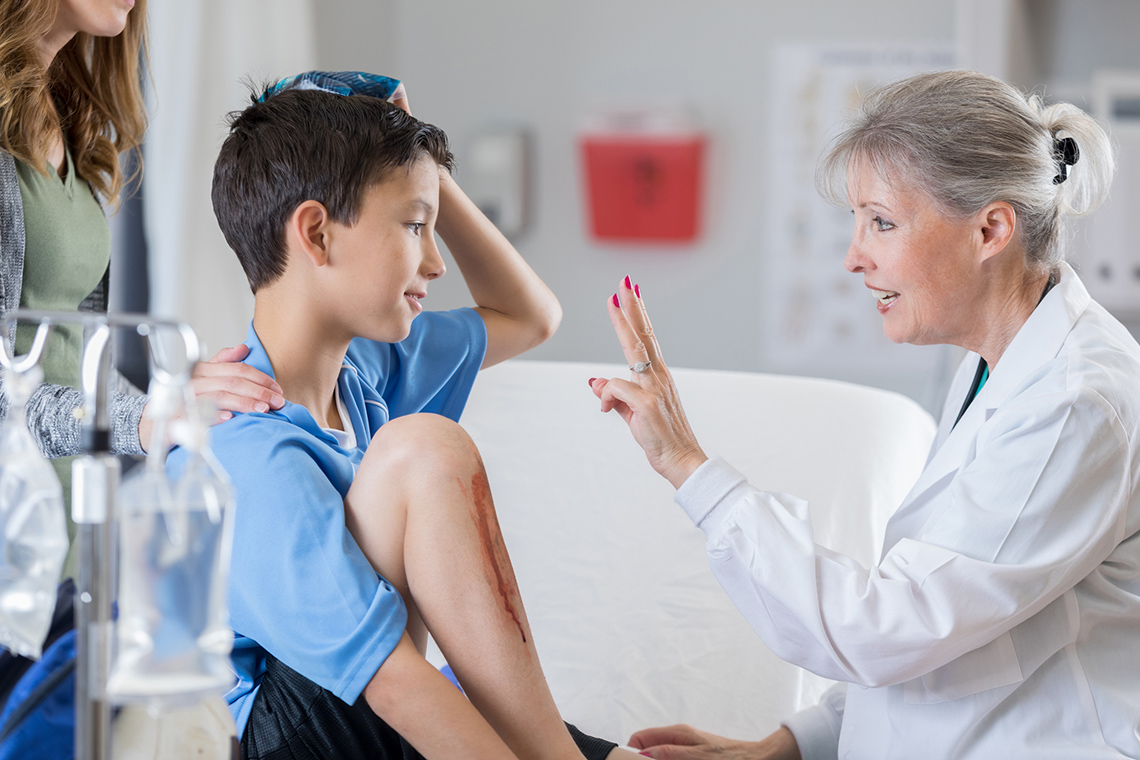
Health professional
Heal concussions

Rest
Those with concussion should avoid:
- activities involving screen time (watching television, using an electronic device, video gaming, and etc.)
- reading and doing homework
- listening to loud music or on headphones
- physical activities
Rest and time are the two things that have been proven to heal concussions.
Student Success
Think-Pair-Share
After a school soccer game, Learner A notices a teammate seems very angry, is complaining that the lights are too bright, and says that they have a headache. Learner A is scheduled to play again the next day.
What would you do? What steps should be taken if someone has a possible concussion?
Record your ideas in a notebook or another method of your choice.
Note to teachers: See your teacher guide for collaboration tools, ideas and suggestions.
Consolidation
Learning check!
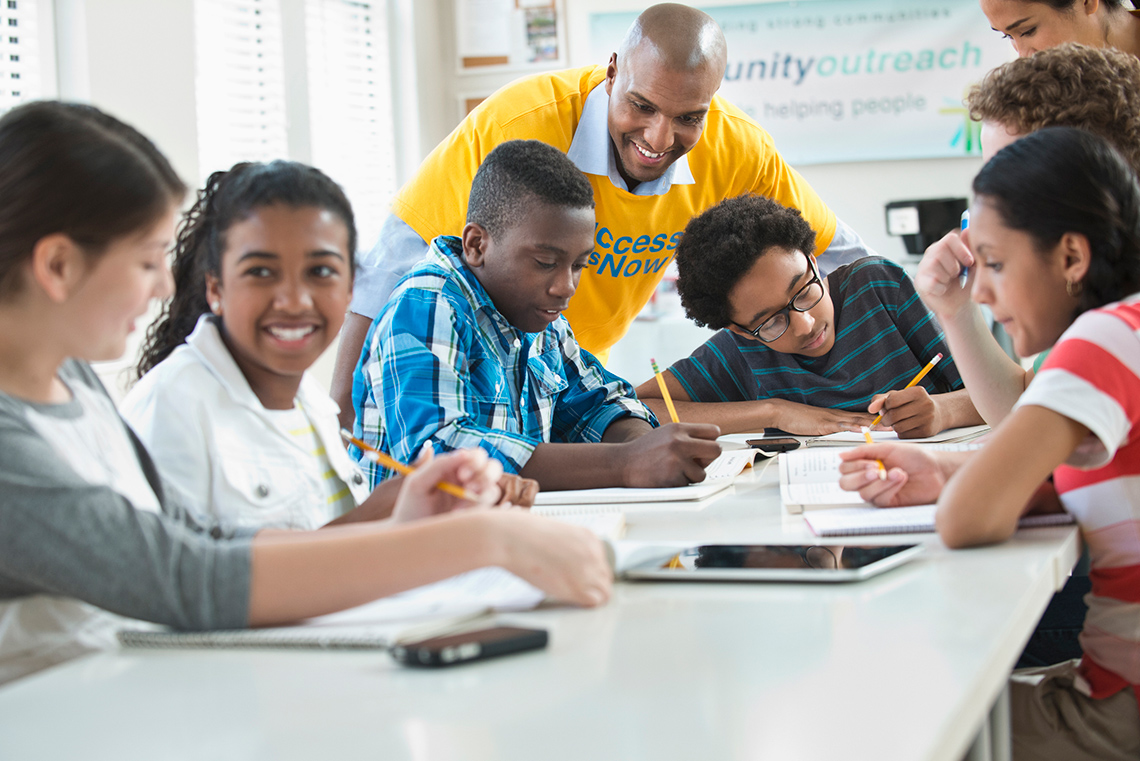
Let’s reflect on what we have learnt about concussions throughout this learning activity.
For each sentence, select the missing word from the drop-down menu.
Return to play

Returning to play is a term used after an individual suffers a concussion and wants to return to a sport or physical activity.
This should be a step-by-step, graduated, and exercise-limited process, which can begin after an initial period of 24-48 hours of both physical and mental rest.
Test Your Skills!
Test your skills!
Let’s consider the following scenario:
Teacher A is a Grade 7 basketball coach. The school’s basketball team is scheduled to play in the City Finals next week.
Teacher A’s star player is recovering from a diagnosed concussion that they suffered two weeks ago.
This morning, the recovering player comes to Teacher A’s office and says that they feel fine, and they want to practice, so they can play in the City Finals.
What must the recovering player be able to do before they step foot on the basketball court?
What are some of the return to play criteria that the recovering player must pass, before they practice and play?
Create a checklist of activities that the recovering player must pass and overcome in order to return to play in the City Finals game.
Complete the Return To Play Checklist Activity in your notebook or using the following fillable and printable document. If you would like, you can use speech-to-text or audio recording tools to record your thoughts.
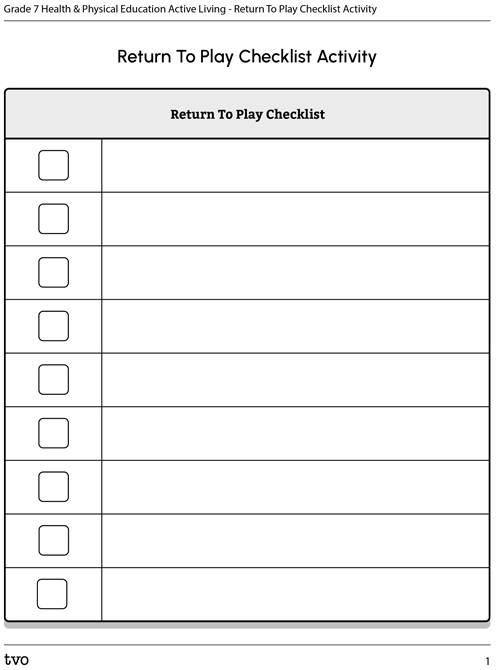
Press the Activity button to access the Return To Play Checklist Activity.
Activity (Open PDF in a new tab)Reflection
As you read the following descriptions, select the one that best describes your current understanding of the learning in this activity. Press the corresponding button once you have made your choice.
I feel…
Now, expand on your ideas by recording your thoughts using a voice recorder, speech-to-text, or writing tool.
When you review your notes on this learning activity later, reflect on whether you would select a different description based on your further review of the material in this learning activity.